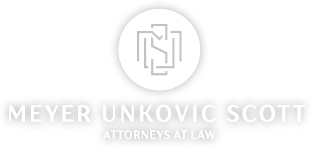Henry W. Oliver Building | 535 Smithfield Street, Suite 1300 | Pittsburgh, PA 15222
Phone: 412.456.2800
Phone: 412.456.2800
Construction Law Alert: AIA Releases Changes to Multiple Legal Documents
Earlier this year the American Institute of Architects (“AIA”) released the 2017 edition of a family of documents, which included changes to the owner-contractor agreements, owner-architect agreements, contractor-subcontractor agreements, as well as the general conditions document.
A red-lined comparison of the 2017 versions with the 2007 edition can be accessed at: https://www.aiacontracts.org/contract-doc-pages/67216-2017-document-release.
One of the biggest changes to the documents is the creation of a standard and comprehensive insurance and bonds exhibit, which becomes Exhibit A to any of the full-service construction contracts. Rather than have these insurance requirements concealed in the A201 General Conditions of the Contract, the insurance-related requirements are now segregated into a separate exhibit. Parties should thoroughly review required and optional insurance coverages that are tailored to their projects in order to comprehensively complete the seven-page insurance exhibit.
In the General Conditions of the Contract document, Section 9.5.2 appears to require notice of a Claim if the Contractor disputes the Architect’s decision regarding a Certificate of Payment. As this is not currently a standard practice, Contractors may want to consider a revision of this provision or provide notice of a Claim regarding any payment reductions with which it disagrees.
Also in the A201 document, a new provision has been added requiring the Contractor to remove Subcontractor liens if the Contractor has received “proper payment.” Unfortunately, the AIA does not define “proper payment,” so the parties do not know whether this means payment certified by the Architect (which won’t include Claims in dispute) or payment that covers all disputed Claims. To avoid inevitable disputes over this ambiguity, changes should be considered for Section 9.6.8.
In the Owner-Architect Contract, services beyond “Basic Services” and identified at the time of agreement are now categorized as “Supplemental Services,” to avoid confusing them with “Additional Services” that arise during the course of the project. Therefore, parties should be cognizant of these changes at the outset of entering into their contracts. The agreements should be made clear what services are to be anticipated from the outset as Basic, Supplemental, and Additional.
This article highlights just a few changes to the AIA documents. For more information about the updated documents, or any other Construction Law matter, please contact Jim Mall. A link to his contact information is included below.
This material is for informational purposes only. It is not and should not be solely relied on as legal advice in dealing with any specific situation.

